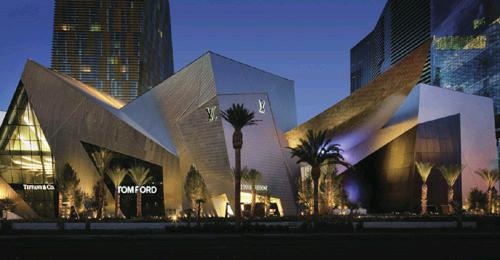The main force driving forwards Chinese luxury market
2018-02-25
It was during the weekend that Miss Wu lingered over a shop selling the luxury brand Louis Vuitton. Through the window, she could indulged in the world filled with all kinds of handbags, dustcoats and high heels-all she yearned for. But she tarried on the street and found herself embarrassed to enter. A message from the Louis Vuitton attracted her attention when she saw it on WeChat Moments. She thought herself one of prospective customers to the Louis Vuitton and contentedly clicked like for the advertisement.
During that day, the Louis Vuitton was also pleased to receive many like from friends of Miss Wu. The fact that those 23 to 37 young people with their ambition towards high-quality life, even though turning a blind eye to the brand in their real life, are attracted on the internet boosts the confidence of the Louis Vuitton to set foot on the realm of Chinas e-commerce and social networks.
The report China Electronic Commerce Research Center (hereinafter referred to as “report”) recently revealed that China has become the biggest market for luxury goods. That apart, the world sees steady development in Chinese luxury e-commerce with the 23 to 37 young people as its mainstay of consumption.
The digitalized luxury brands on social networks
Besides luxury brand advertising, new things popped up: Luxury brand Celine launched its official account and went online with mini programs. Such a doing, compared with the ever-happened activity in which Celine made an assertion that any overexposure on the Internet or easy access to goods on the Internet resulting in a cheap brand, showed a new turning point since Celine stopped its resistance to the internet on November 14th.
It is in fact that last year saw such luxury brands as Dior, Burberry, Longchamp went online with mini programs-not even news. “Consumption enters a higher escalation. Under such a circumstance, Chinese consumers at a large number are willing to buy luxury goods with high prices. Luxury goods, advertising through the channel of social networks, are able to access people in second tier cities or even less developed cities.” Said Yu Simin, an Associate Analyst of Network Retail Department China Electronic Commerce Research Center.
What drives those luxury brands moved towards Chinas e-commerce platform, launched their official accounts and went online with mini programs? Data from the report revealed that luxury brands cast greedy eyes on China which is regarded as a luxury selling market. The market value of Chinas luxury goods industry in 2016 reached 120 billion yuan, an increase of 6% compared that of 113 billion yuan in 2015 - also in the report. In terms of consumption, you can count on China as the worlds largest consumer of luxury goods. With the huge potential market, each luxury goods is getting closer at Chinese consumers - an increasing number of consumers to buy such goods.endprint
The favorite of those 23 - 37 young people provides after-sales services
Not only Miss Wu herself, but luxury brands know well the changing market- the fashion trend getting youth-oriented, the customers to the physical store getting fewer, and the consumption concept changing all the time. In addition, the report points out the trend of the Chinese luxury industry: pleasing the changing-style young people with fresh new designs and marketing methods; reforming existing stores to attract consumers with grand stores and flagship stores; more important, Chinese luxury brands giving it a shot in the field of ecommerce. For instance, Tygerhauer daily dales during Nov. 11th outstripped what it did in any month last year.
After detailed information on Weichat Account, Miss Wu sought for luxury goods on Tmall, JingDong, etc. Young consumers in an increasing number prefer flagship stores online. According data of China Electronic Commerce Research Center, the market value of Chinas luxury goods industry in 2016 reached 57.35 billion yuan, an increase of 80.2% compared that of 465 billion yuan in 2015. The event of SECOO Listing on NASDAQ on September 22nd suggests a booming ecommerce of Luxury goods.
Miss Wu finally bought a Furla watch on the Tmall on which this kind of watch enjoyed 78% discount and the interest-free discount by installment. According to data, the main consumer group of e-commerce in Luxury goods during 2016 - 2017 was at the age of 23 - 37. “Ecommerce in luxury goods would count on such ways as promotion, flash purchase, discount to attract consumers. But Price war or over discount would result in a cheaper brand.” said Yu Simin.endprint
杂志排行
China Textile的其它文章
- 数据
- Hong Kong exhibitor debuts International star’s accessory collection
- ISPO Beijing 2018 reflects the great potential of the Chinese sporting goods industry
- It might not sound sexy,but AI & AR are what’s hot in retail
- Newness has put denim back in the saddle again
- Baoshan-Mandalay Industrial Park making for textile dividend
